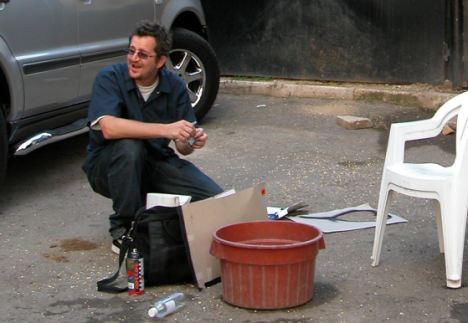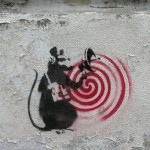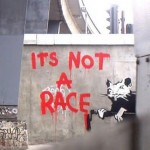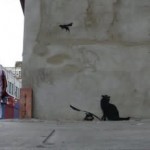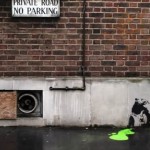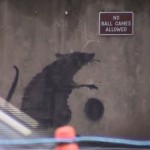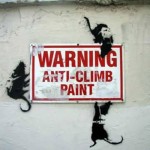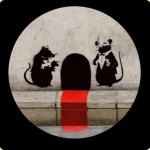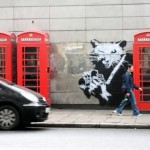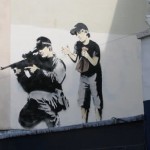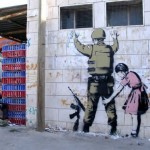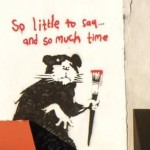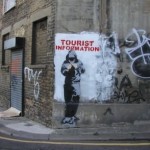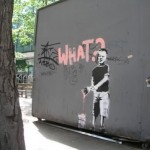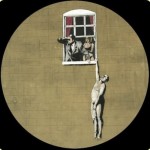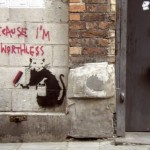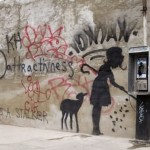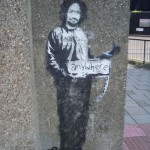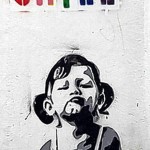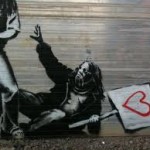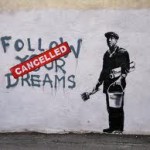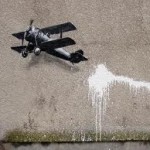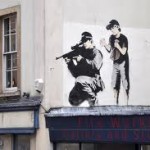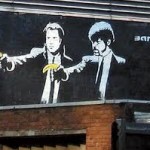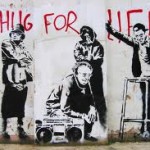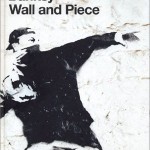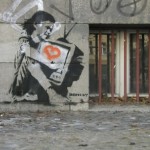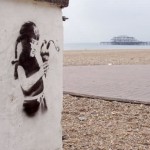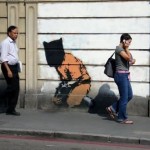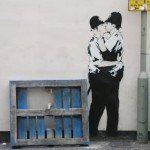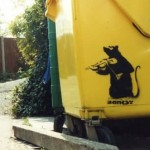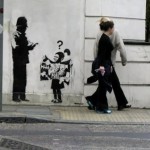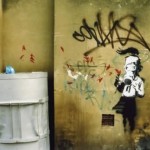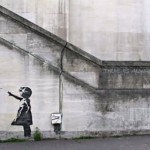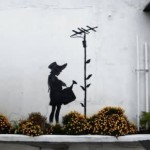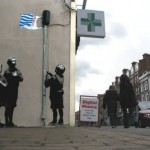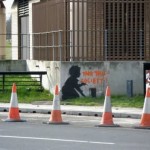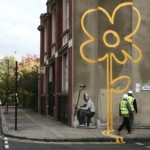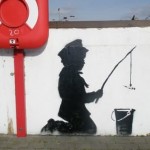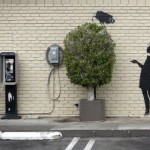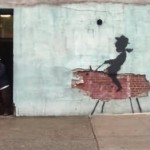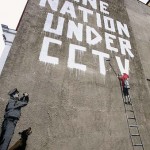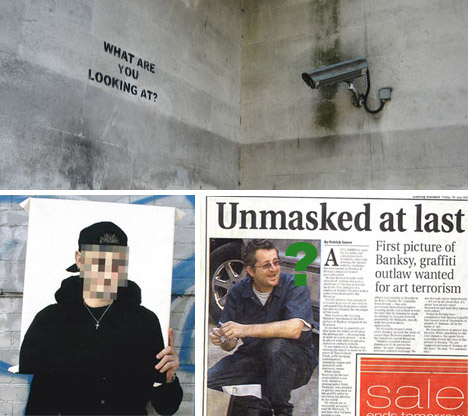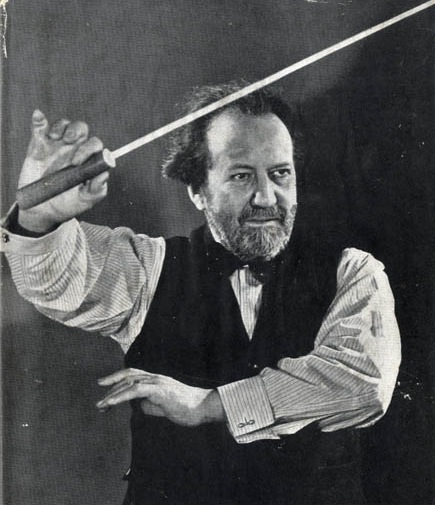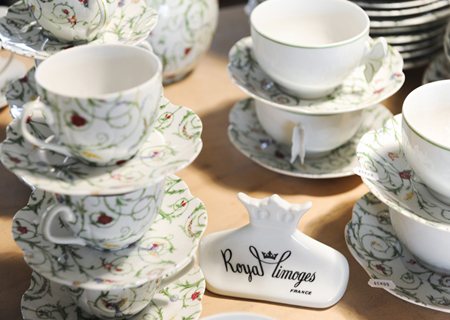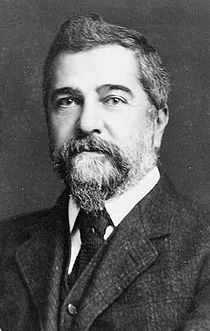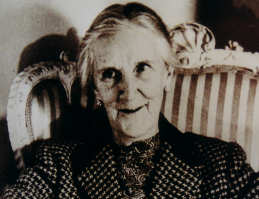Banksy is probably a famous, unknown English graffiti artist whose authenticated work commands very high prices! He has managed to elude the media and hide his identity for many years. There is speculation that he is possibly named Robert Banks (pictured), but know one can ber certain. His artworks are often satirical pieces of art which encompass topics from politics, culture, and ethics. His street art, which combines graffiti with a distinctive stenciling technique, has appeared in London and in cities around the world.
Possibly born in Bristol in 1974, Banksy began as a freehand artist before switching to stenciling around the year 2000; his anti-war, anti-establishment and pro-freedom graffiti images began springing up on city walls in the late 1990′s. Although he has given numerous interviews and even published several books, Banksy’s true identity remains unknown.
As written in DailyMail in March ‘08 Banksy pulled off an audacious stunt to produce what is believed to be his biggest work yet in central London. The work, above a Post Office yard in Newman Street near Oxford Circus, shows a small boy, watched by a security guard, painting the words: ‘One nation under CCTV.’
Andrew Newman, 35, a businessman from Dulwich, who works locally, said: ‘It was only on Sunday morning that the Post Offices guys realised what had happened.’
Under British Law this is considered to be vandalism. However isn’t that the whole point of his art? Blurring the edges of what society thinks of art /vandalism, right / wrong, acceptable / unacceptable? Would we think about those issues if it was just a piece of Art on a wall in a gallery somewhere?
The Banksy effect (2006–2007)
“There are crimes that become innocent and even glorious through their splendour, number and excess.” Banksy
After Christina Aguilera bought an original of Queen Victoria as a lesbian and two prints for £25,000, on 19 October 2006, a set of Kate Moss paintings sold in Sotheby’s London for £50,400, setting an auction record for Banksy’s work. The six silk-screen prints, featuring the model painted in the style of Andy Warhol‘s Marilyn Monroe pictures, sold for five times their estimated value. His stencil of a green Mona Lisa with real paint dripping from her eyes sold for £57,600 at the same auction. In December, journalist Max Foster coined the phrase, “the Banksy effect,” to illustrate how interest in other street artists was growing on the back of Banksy’s success.
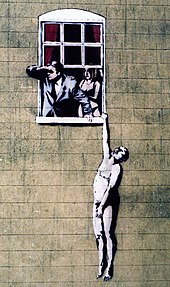
Naked Man image by Banksy, on the wall of a sexual health clinic in Park Street, Bristol. Following popular support, the City Council has decided it will be allowed to remain.
On 21 February 2007, Sotheby’s auction house in London auctioned three works, reaching the highest ever price for a Banksy work at auction: over £102,000 for his Bombing Middle England.
Two of his other graffiti works, Balloon Girl and Bomb Hugger, sold for £37,200 and £31,200 respectively, which were well above their estimated prices. The following day’s auction saw a further three Banksy works reach soaring prices: Ballerina with Action Man Parts reached £96,000; Glory sold for £72,000; Untitled (2004) sold for £33,600; all significantly above estimated values. To coincide with the second day of auctions, Banksy updated his website with a new image of an auction house scene showing people bidding on a picture that said:
“I Can’t Believe You Morons Actually Buy This Shit.”
In February 2007, the owners of a house with a Banksy mural on the side in Bristol decided to sell the house through Red Propeller art gallery after offers fell through because the prospective buyers wanted to remove the mural. It is listed as a mural that comes with a house attached. In 2008, Nathan Wellard and Maev Neal, a couple from Norfolk, UK, made headlines in Britain when they decided to sell their mobile home that contains a 30-foot mural, entitled Fragile Silence, done by Banksy a decade prior to his rise to fame. According to Nathan Wellard, Banksy had asked the couple if he could use the side of their home as a “large canvas,” to which they agreed. In return for the “canvas”, the Bristol stencil artist gave them two free tickets to the Glastonbury Music Festival . The mobile home purchased by the couple 11 years ago for 1,000 GBP, is now being sold for 500,000 GBP.
In April 2007, Transport for London painted over Banksy’s iconic image of a scene from Quentin Tarantino‘s Pulp Fiction, featuring Samuel L. Jackson and John Travolta clutching bananas instead of guns. Although the image was very popular, Transport for London claimed that the “graffiti” created “a general atmosphere of neglect and social decay which in turn encourages crime” and their staff are “professional cleaners not professional art critics.”
Banksy tagged the same site again and, initially, the actors were portrayed as holding real guns instead of bananas, but they were adorned with banana costumes. Some time later, Banksy made a tribute art piece over this second Pulp Fiction piece. The tribute was for 19-year-old British graffiti artist Ozone who, along with fellow artist Wants, was hit by an underground train in Barking, East London on 12 January 2007. The piece was of an angel wearing a bullet-proof vest holding a skull (pictured below left). He also wrote a note on his website saying:
The last time I hit this spot I painted a crap picture of two men in banana costumes waving hand guns. A few weeks later a writer called Ozone completely dogged it and then wrote ‘If it’s better next time I’ll leave it’ in the bottom corner. When we lost Ozone we lost a fearless graffiti writer and as it turns out a pretty perceptive art critic. Ozone – rest in peace.

